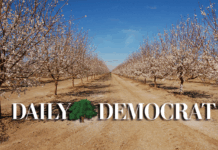The Hunter region has long been recognized for its stunning landscapes and rich agricultural heritage. However, as the demand for sustainable food production rises, many are asking: Should the Hunter region evolve into a hub for grain milling, meat packing, and dairy processing? This question isn’t just about economic growth; it touches on food security, job creation, and environmental sustainability. In this article, we’ll explore the potential benefits and challenges of transforming the Hunter into an agro-industrial powerhouse.
The Current Landscape of Agriculture in the Hunter Region
To understand the potential for change, it’s essential to grasp what’s happening in the Hunter today. This area is already known for its diverse agricultural activities, including vineyards, fruit orchards, and livestock farming. Yet, the region has room for growth in sectors like grain milling, meat processing, and dairy production.
- Grain Milling: With fertile soils and suitable climate, the Hunter could become a leader in grain production.
- Meat Packing: The existing livestock industry provides a solid foundation for expanding meat processing.
- Dairy Processing: There’s a growing market for dairy products, and local farms could meet this demand.
Economic Benefits of Agro-Industrial Expansion
Imagine the economic boost if the Hunter became a powerhouse for these industries. The potential for job creation is significant, with new positions emerging in farming, processing, and distribution. Additionally, the local economy could benefit from increased investment and infrastructure development.
- Job Creation: New facilities would lead to thousands of local jobs.
- Increased Investment: Interest from investors could elevate the region’s profile.
- Supply Chain Optimization: Local processing reduces transportation costs and carbon footprints.
Challenges to Overcome
Of course, with opportunity comes challenges. Transitioning to a more industrial agricultural model presents various hurdles that need addressing.
- Environmental Concerns: Increased production can strain local ecosystems.
- Competition: Established markets may resist new entrants.
- Regulatory Hurdles: Adhering to food safety and environmental regulations can be complex.
The Role of Technology in Modern Agriculture
As the agricultural landscape shifts, technology plays a crucial role. Advanced farming techniques, precision agriculture, and sustainable practices can help mitigate some environmental impacts while enhancing productivity.
- Automation: Streamlining processes can improve efficiency.
- Data Analytics: Utilizing data can optimize crop yields and resource use.
- Sustainable Practices: Innovations in agriculture can lead to eco-friendly solutions.
Community Involvement and Support
For any significant transformation, community support is vital. Engaging local stakeholders, from farmers to consumers, can ensure that the changes benefit everyone involved.
- Education: Workshops and training can prepare the local workforce for new opportunities.
- Local Partnerships: Collaborations between farmers, businesses, and government can drive initiatives.
- Consumer Awareness: Promoting local products can create demand and support sustainable practices.
In exploring the future of the Hunter region, it’s clear that while the potential for becoming a grain milling, meat packing, and dairy processing hub exists, it requires careful planning and community involvement. What do you think? Are you ready to envision this transformation for the Hunter?





















